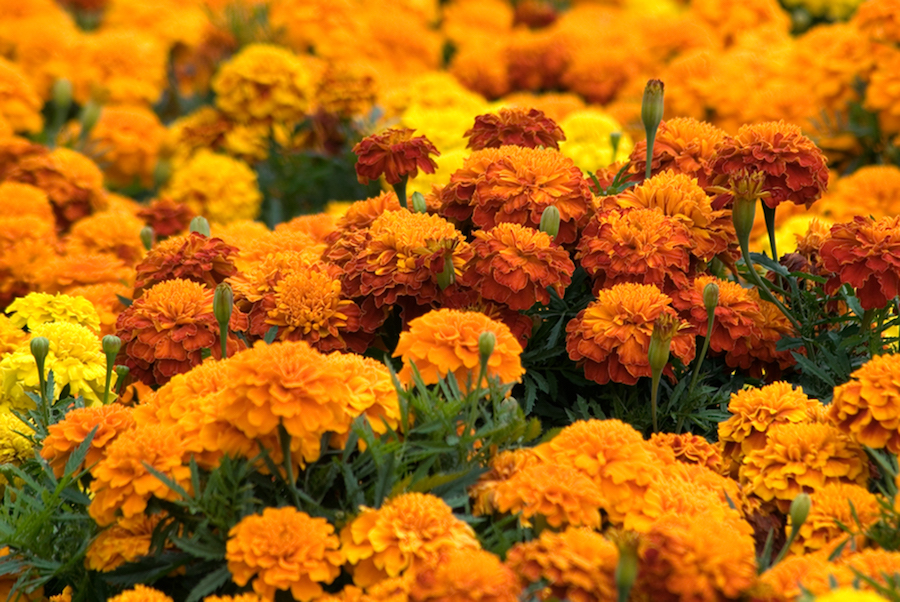5 nifty uses for the humble marigold
It’s the year of the marigold. Hannah Stephenson unearths five things you might not know about this brightly coloured plant.
It may seem like a common-or-garden annual to add to beds, borders and containers – but when it’s given such quirky names as Disco, Bojangle and Bonanza, it’s clear there’s more to the marigold than meets the eye.
This scorching sizzler has been named 2018’s plant of the year by Fleuroselect, the international organisation for ornamental plants, available in golden hues from pale yellow to dark red flower from spring until the first frost.

Tagetes patula ‘Strawberry Blonde’
Not to be confused with the calendula or ‘common marigold’, the marigold, or tagetes, originates from central America and is considered sacred to the Aztecs. It is thought to help light the way for the departed and features heavily in Mexico’s Day of the Dead celebrations.
The Royal Horticultural Society (RHS) is to trial more than 140 varieties at RHS Garden Wisley this year to celebrate this plant’s diversity and explore how it might be used in gardens – whether for its brashness or more subtle charms. Here, the charity notes some if its more novel global uses:
1. To keep gardens healthy

Tagetes growing with tomatoes
Companion planting is the term for plants that assist in the growth of others – be it repelling pests or providing nutrients. Although current knowledge is uncertain, the Mexican marigold (Tagetes minuta) is sometimes used in an attempt to control root knot nematodes – worm-like animals found on the roots of some plants that can lead to stunted growth.
French marigold (Tagetes patula) and golden marigold (Tagetes tenuifolia) cultivars, are also often planted alongside tomato plants in the hope of repelling whitefly.
2. As chicken feed

Chickens like marigolds
Marigold petals have long been used as a means to make egg yolks more vivid, because of their high levels of xanthophylls that result in yellow pigment. Chickens are also reported to love the tasty garden treat.
3. In the kitchen
Some marigolds – French marigold (Tagetes patula) and golden marigold (Tagetes tenuifolia) – are fit for human consumption, but it’s highly advisable to only eat plants sold for this purpose. Because of their fresh, citrus taste, marigolds petals are sometimes recommended for adding sparingly to salads or appear for decorative effect on desserts. In the Americas, marigolds also come as a dried herb considered a suitable substitute for tarragon.
4. To ward off pests

Tagetes oil is said to repel mosquitoes
Tagetes essential oil has a sweet and fruity odour that is thought to repel several parasitic insects that can prove pesky to humans, including mosquitoes, fleas, bed bugs, and lice. The flower is also found hanging from many a doorway in Asia to keep away intruders such as cockroaches, white ants or termites.
5. As a skin soother

Tagetes essential oil can be a skin soother
Because tagetes essential oil is considered to have anti-microbial and antibiotic properties, it is often used as a treatment for minor open wounds, sores, cuts and ulcerated skin.
The Press Association
Latest posts by The Press Association (see all)
- 6 mind sports to exercise your brain and keep you sharp - December 20, 2024
- Quiz: What classic Christmas food or drink are you? - December 20, 2024
- Leftover turkey and watercress pie - December 20, 2024
- Catherine and William choose family shot for Christmas card photograph - December 19, 2024
- The best books to watch out for in 2025 - December 17, 2024




















